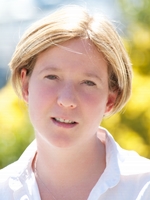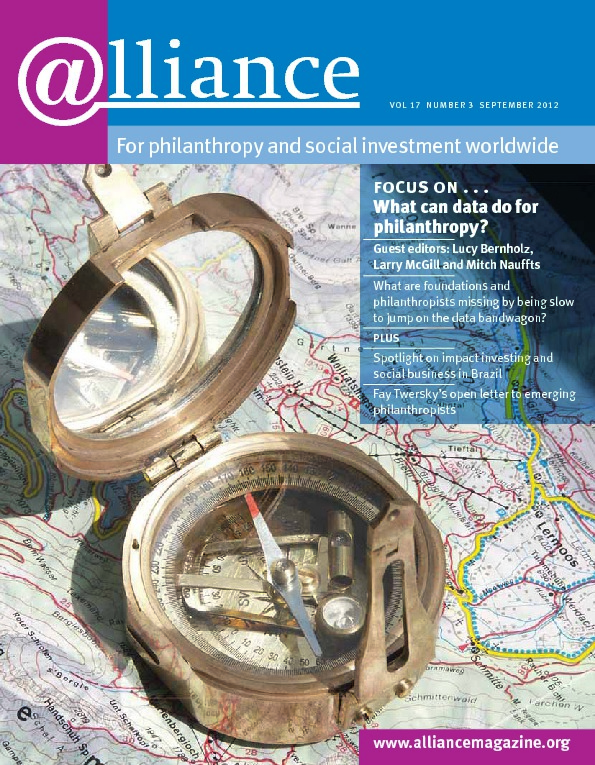The past several years have witnessed exciting new developments in global philanthropy as grantmakers increasingly recognize the need to integrate gender into their approaches. This has been marked both by raised awareness about the importance of using a gender lens and by concrete strategies for effectively integrating gender  approaches into grantmaking.
approaches into grantmaking.
These developments are very welcome – particularly as recent Foundation Center statistics show that US foundation funding to women and girls has remained below 7.5 per cent for over 15 years.
Some key initiatives are helping pave the way. In Europe, Untapped Potential, a report published by the European Foundation Centre and Mama Cash, raised awareness about the need for funding for women and girls, while a new GrantCraft guide on Funding for Inclusion looked at how to integrate a gender lens into funding.
In the US, the Gender and Global Grantmaking Initiative (GGI), a joint project initiated in 2008 by Grantmakers Without Borders (now part of the EDGE Funders Alliance) and the International Network of Women’s Funds, has engaged over 100 grantmakers and grantee partners in developing practical ways to support grantmakers in integrating gender perspectives into their work.
Lessons learned
What have we taken away from the GGI so far? On a practical level, participants have shared perspectives on integrating gender into site visits, hiring practices, decision-making systems, board and advisory systems, training, outreach and communications.
But there have also been insights about the tough and personal questions that underpin grantmaking practice. How do we, as grantmakers, grapple with strategy, power, privilege, guilt, relationships, fear, political correctness and visible and invisible oppressions? We frequently face walls of resistance to gender integration – and often find that some of that resistance lies within ourselves and our own organizations, perhaps from staff or board members, who perceive a gender lens as an ‘add on’ or counterproductive to the mission. In an article in the September 2011 issue of Alliance, Terry Odendahl recounts how a consultant protested at her efforts to integrate a stronger gender lens throughout the organization, saying ‘That’s not what we fund.’
Thus a central lesson of GGI has been that integrating a gender lens is not just about tools, but about a supported process whereby grantmakers can address challenges collectively. Just as importantly, it must address power, discrimination and rights and be closely connected with women’s rights advocates and agendas. It can help grantmakers understand issues more clearly, move out of ‘zero sum game’ thinking, and, perhaps most importantly, complete the transformation from seeing women as victims to seeing them as solution-builders and architects of their own lives.
Critically, GGI has shown us that using a gender lens (especially when it is firmly embedded in an intersectional analysis that integrates factors like race, class, sexuality and disability) is not only about increasing the quantity of money going to gender equality but also about improving the quality of grantmaking generally, no matter the programme area.
A clear gender lens can improve quality grantmaking by …
Changing whom we fund
As Françoise Pissart reminded us in her opinion piece in the June 2012 issue of Alliance, a gender lens should not simply be a way of ‘adding women’ to grantmaking programmes and ‘stirring’. A clear gender analysis leads us to ask critical questions such as: which women and girls are we serving? Who is being left out? What might we be missing for boys and men? Honest answers to those questions can dramatically affect our grantmaking.
Changing our image of gender
A gender lens can take lessons not only from feminism but also from the lesbian, gay, bisexual, transgender and queer (LGBTQ) equality movements. The analysis emerging from these movements has expanded our conceptual framework – ensuring that we understand gender as ‘a spectrum, rather than a binary, in recognition of people’s diverse experiences and expressions of gender, which often fall outside the rigid categories of “feminine” and “masculine”’. In this framework, LGBTQ people and issues are fully integrated into our gender analysis, including in particular transgender and intersex people, surely among the most marginalized and underfunded groups of people on any continent.[1]
Changing and deepening our relationships with grantee partners
GGI participants have commented that applying a gender lens to a grantmaking approach has profoundly shifted and deepened relationships with grantee partners. One participant described the profound impact their discussions with grantees has had: ‘We support a group in India considered one of the best for the Dalit community. When we met them, there were no women in leadership and no understanding of the intersections of women and the Dalit community. After we talked to them about it, they said, “you are right”. Now, they have launched about 40 different organizations [who are] working on bringing women’s issues into their organization – it’s exploded for them.’
Changing our image of donors
We are also witnessing an emerging gender trend on the donor side of philanthropy. While the world’s largest donors (those giving over $1 billion) remain almost exclusively male (with the notable exception of Melinda French Gates), increasing numbers of up-and-coming philanthropists are women. Their hands-on, activist approach to philanthropy may also be catching on, as the New York Times has noted.[2] The Women Moving Millions project offers a great example, with members giving over $200 million to initiatives supporting the advancement of women and girls, and, just as critically, changing perceptions of women as global donors.
Helping to counteract misinformation and fuel movements
Resistance to integrating gender equality into grantmaking takes many forms. Even generally progressive social change funders often seem to think that gender equality has already been achieved or that it is the business of the women’s funds. To move this work forward, we needed to counteract these misperceptions with hard facts. Since 2006, the Association for Women’s Rights in Development (AWID) has done just that, with their Where is the Money for Women’s Rights? (WITM) initiative. This has given us a clear picture of the very limited amounts and types of funding provided to women’s rights organizations globally – and the information needed to dispel perceptions that gender equality is adequately funded.
Creating new paradigms of resource mobilization
The 2012 AWID Forum launched a Resource Mobilization Hub, successfully bringing together donors and civil society activists to discuss how we can work together to strengthen social movements, and in particular the movement for global gender equality. AWID made clear that we need to think beyond existing fundraising and financial resource models; in fact, both funders and activists have resources to share. This is a mini-revolution in philanthropy.
Changing how we fund
The GGI’s most important lesson was this: bringing a gender lens to global grantmaking implies a political and power analysis. First, we must recognize and challenge ingrained resistance to gender equality – including our own. Early on, several leaders of women’s funds described similar experiences over decades of work, fighting to be heard on the importance of supporting gender-sensitive initiatives, and meeting with resistance and marginalization – even within the grantmaking community. As one GGI participant pointed out: ‘When you are pushing boundaries and new territories, when the victory is bigger, the fall can be greater, and the push-back more intense. … Imagine bringing this back to your staff, to your board – there is going to be pushback – so how do you deal with that?’
We must also acknowledge that deep-rooted inequality will not be solved by simply adding more money to the mix or by partial or technical ‘fixes’. Many GGI participants said that it is only through consistently supporting women’s leadership and inclusion in decision-making that the scales of gender inequality and injustice will begin to balance.
The women’s groups and movements that have led the charge for decades and have the most experience in the fight for gender equality must be part of the ‘new’ solutions. In addition, as AWID’s Angelika Arutyunova puts it, ‘we must hold on to the rights dimension of women’s empowerment and gender equality as ends in themselves and not merely as means to an end (ie economic growth).’
In the big picture, adding a gender lens does not just improve the effectiveness of grantmaking, important though that is; it is also about stretching the vision of what philanthropy can be about: more inclusive of a much broader array of issues, taking full advantage of the wisdom and expertise inherent in valuing all members of society.
One GGI participant sounds a clear call to fellow grantmakers:
‘You may think you are being neutral by staying in the “middle” of these debates. You think you don’t want to impose. But in our work, you are looking at the powerful and the powerless. So if you don’t say anything, you aren’t just being silent. You are sending a message that the status quo is acceptable.’
1 Funders for LGBTQ Issues estimates that only 0.12 per cent of all US funding from 1975 to 2009 has gone to LGBTQ issues (Forty Years of LGBTQ Philanthropy 1970-2010 (2012) http://www.lgbtfunders.org/files/40years_lgbtqphilanthrophy.pdf).
An earlier report (Lesbian, Gay, Bisexual and Transgender Grantmaking by U.S. Foundations (2002) http://www.lgbtfunders.org/files/LGBT_Funding_2002.pdf) suggests that only 1 per cent of this supports transgender people.
2 28 June 2012. http://www.nytimes.com/2012/06/29/world/europe/annie-lennox-blurring-the-line-between-donor-and-activist.html?pagewanted=all
Katrin Wilde is executive director of the Channel Foundation. Email kwilde@channelfoundation.org
Jane Barry is a principal at Linksbridge LLC. Email jane.barry@linksbridge.com
To download
http://www.mamacash.org/page.php?id=2788 for Untapped Potential: European foundation funding for women and girls
http://www.grantcraft.org/index.cfm?fuseaction=Page.ViewPage&pageId=3722 for Funding for Inclusion: Women and girls in the equation





Comments (0)